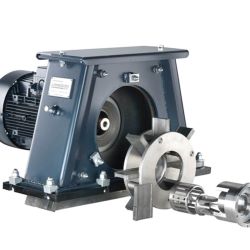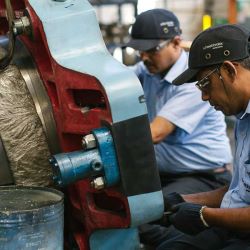How does it work?
The team uses a virtual model of the workpiece and runs it through a virtual blast wheel or nozzle arrangement, controlling all relevant parameters.
The blast pattern is programmed as a Gauß distribution and each hit of the abrasive on the surface is counted and translated into a colour that indicates the intensity of the treatment.


